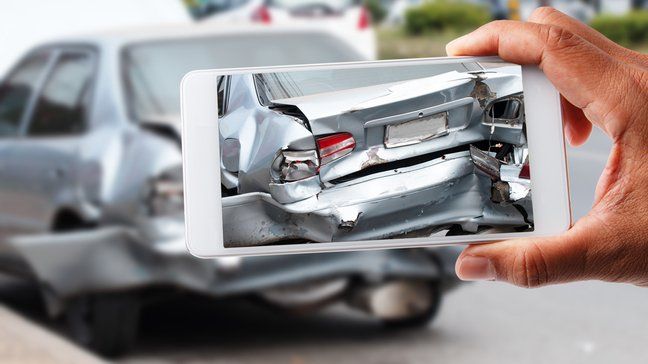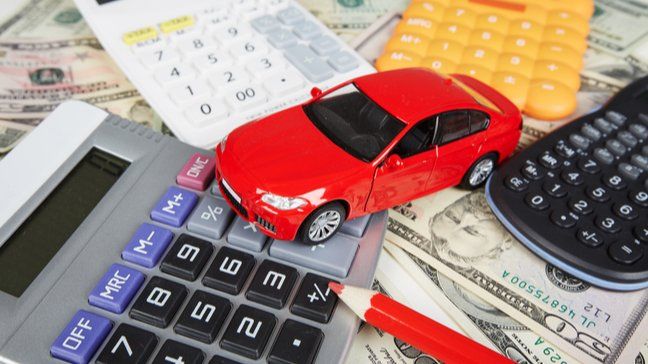It is wise to get several quotes when searching for car insurance since different companies can offer such different options. But before you do that, there are ways to estimate what you would most likely pay.
In this car insurance estimator article, I’ll cover most of the critical things to consider to help you approximate what you should be paying for car insurance. This will be tremendously beneficial when you go to get the best car insurance quotes, so you can determine what a reasonable rate is.
Decide just how much auto insurance you might need

There are three main kinds of automobile insurance you have to have an understanding of:
Liability
Liability insurance covers any medical expenses or property damage for other people affected by a potential accident. If you don’t have a high net worth or don’t have a significant amount of assets to your name, you probably don’t need very high limits here.
If you’re a homeowner, though, I recommend 100/300/30 at a minimum. This implies you will have coverage for as much as $100,000 for every individual, up to $300,000 per accident, and $30,000 for any property damage expenses.
If you’re just looking for the cheapest auto insurance coverage you can get, go with liability coverage. At the minimum level, your state requires it. I’d caution against only purchasing this, though, unless you’re operating on a paper-thin budget.
When it comes to auto insurance, state minimums are often very low. This might seem enticing, but if you don’t have sufficient coverage in the event of an accident, it’s possible to get sued for your assets like your home or personal savings.
It’s also important to note that liability insurance coverage does not reimburse you for any damages done to your car.
Collision
Collision insurance covers any damages to your vehicle, and it doesn’t matter who is at fault in the accident. In case your car is totaled because of an auto collision, collision insurance coverage pays up to the true street value of your vehicle.
Comprehensive
Comprehensive insurance will cover damage to your car from matters like hail, flood, fire, vandalism, hitting an animal, and theft. This coverage will also cover the street value of your vehicle prior to the accident in case it is considered totaled.
If your car is over a decade old (and probably not worth a whole lot), odds are you might not need both collision and comprehensive insurance coverage. That being said, most auto insurance companies offer these coverages for a relatively low cost. So, it may just be worth it to have it.
Don’t forget about the deductible
You’ll also need to figure out a deductible that you can live with. A deductible is the amount you’ll pay before the insurance kicks in.
You can save quite a bit of money if you go with a higher deductible. Just don’t forget that it’ll be more money out of pocket in the event you do need to make a claim. Plus, you’re required to pay a deductible for each claim in nearly all circumstances.
You should always have emergency savings. And your deductible should be affordable to the point that paying it out of your emergency savings wouldn’t completely drain you.
So, if you can only muster up $2,000 in emergency savings, don’t choose a plan that has a $1,000 deductible – that’s half your savings.
And just remember – your vehicle isn’t going to be fixed until you pay your full deductible and insurance kicks in. So be sure to compare insurance rates and consider the amount of the deductible.
What other coverage options are there? How much do they cost?
The more insurance coverage you have, the more costlier your plan is going to be.
For instance, let’s say you go with the cheapest option you can and stick to only the state minimum. Your cost is going to be significantly lower than if you choose a more well-rounded plan that also covers the protection of your car.
You’ll often see liability insurance coverage cost more since there’s a higher level of risk for your insurer. Comprehensive and collision insurance coverage is going to be defined by the total cost to replace your car – so you’ll tend not to see a ton of variation here.
Just remember that major accidents can lead to massive hospital bills and all other sorts of expenses. This could drive the cost of an insurance claim up to a few hundred thousand dollars.
And if you get in an accident and are what is considered “underinsured” (meaning, you don’t have enough liability coverage), you can be sued for the difference by someone you’ve hurt.
Collision and comprehensive insurance will be impacted by whatever deductible you choose. And once more, the lower your deductible, the more the insurance provider will need to pay. Therefore, the higher your rate will be.
Furthermore, things like coverage for medical payments, personal injury protection (PIP), or uninsured motorist bodily injury are going to make your prices higher.
What you need to be mindful of is your own health insurance. While these options will increase your premiums, you might not have the ability to pay for treatment if you are hurt in an accident that you’re responsible for.
Watch to make sure you’re not paying for coverage you don’t need

I always recommend over-insuring versus under-insuring. It sounds expensive, but I think most people would rather pay a little more on an annual basis than get stuck in a situation where they can’t afford a $100,000 medical bill.
At the very least, have enough coverage to protect all of your assets (home, car, etc.). That said, there are some types of coverage that might not be worth it for you – and it depends on the kind of car you have.
Gap insurance, something that’s often offered as an upsell with many insurers, typically doesn’t make sense if your car is over a couple of years old. That’s because the cost of replacement is far less than when the vehicle was brand new.
On the same token, if the car you own is only worth a few thousand dollars, the cost of comprehensive and collision premiums are probably going to cost more than the coverage they’d provide if your car were wrecked. So they may not be worth it.
Never stay stagnant with your auto insurance. It’s a bad financial move. Always take a look at your coverage and premiums annually and see if you need to make any changes.
It’s critical to know how your auto insurance rate is determined

Auto insurance premiums are going to vary greatly. This is dependent on a bunch of different factors. Most importantly, though, are these:
Age
How old you are, or your years of experience driving, impact your premium. The more experienced a driver you are, the lower your premiums are going to be.
Being young typically means being an inexperienced driver (at least in the eyes of your auto insurance company that is looking at data). So if you’re a teenager or you’re adding a teenager to your policy, expect those rates to go up. Also, rates will be slightly higher for teenage males.
Again, car insurance providers base rates off of your experience level, rather than your age. But common sense tells you that the younger you are, the less experienced you are driving.
So that’s why it’s a common misconception. And it can impact premiums. A teen driver just getting their license can expect to pay two to three times higher premiums due to the added statistical risk.
Teen drivers are the “riskiest”
According to InCharge.org, “Teen drivers are among the ‘riskiest’ group to insure. According to the Centers for Disease Control and Prevention, drivers ages 15 to 19 are four times more likely to crash than older drivers, making car crashes the No. 1 cause of death for teens.”
The same article quotes average rates from Insurance.com, showing that the 16-19 age group has an average auto insurance rate that’s more than double that of the 45-49 age group.
Even teenagers that have a perfect track record are going to see higher rates for at least a few years. Car insurance rates don’t usually start to go down until you turn 25.
Middle-aged drivers see the lowest premiums
Middle-aged drivers (like the age group noted above) will tend to see the lowest auto insurance premiums overall. Once you hit around 65, though, your car insurance premiums will begin to increase steadily.
So to recap, the less experience you have as a driver, the more you’ll pay in car insurance premiums. When all other things are equal, there is no other factor that will impact rates more than your age/experience.
The data that car insurers use to determine rates shows that drivers with less experience get into accidents much more. Thus, they carry the most risk to insure. So premiums will reflect this increased level of risk.
Your driving record
One of the essential things your auto insurer is going to look at is your driving history. If your driving history is good and you have no accidents, you’ll usually get a discount on standard auto insurance rates.
Now, if you have one or more car accidents or moving violations (this includes things like DUIs or speeding), you’ll have higher rates since you’re considered more of a risk to the insurer.
In the event you have too many car accidents or moving violations on your record, certain auto insurance companies may not even bother insuring you. A common rule of thumb is not to have more than 15 points on your record.
Accidents and moving violations will vary based on the insurer, so if you’re not sure, check with the particular company you are considering.
Generally, however, even a minor moving violation like a speeding ticket may boost your premiums significantly. So remember that the riskier you are in the eyes of your car insurance provider, the higher your premiums will be.
Marital status
Research shows that married couples tend to have a lower frequency of both car accidents and claims than single motorists do.
Premiums can drop quite a bit for married couples, simply because they’re married. On top of this, married couples can take advantage of things like multi-car and multi-policy (bundling) discounts.
Allstate, one of the best car insurance providers, says that:
“unless one partner has a poor driving record, you could benefit from shifting to a single car insurance policy after you tie the knot, with both of you as listed drivers.”
You’re considered “single” if you’ve been divorced, widowed, or have just never been married. If you have children of driving age, of course, that’s more people you’ll need to insure. This typically means your rates will be a bit higher.
Your car
Car insurance providers want to analyze the make and model of your car, as well as the year it was produced. A cheaper and/or older car often costs less to insure (great frugal tip by the way – buy a cheap car because it’s less expensive to insure!).
Car insurance companies keep a database that shows them which types of vehicles have the highest number of accidents and injuries. That data, regardless of your driving record, will affect your car insurance premiums.
This accounts for the risk the insurance company takes on in the event you cause damage to other vehicles or people.
They also track which vehicles cost the most to repair or replace, as well as the type of cars that are most likely to be stolen. This data allows insurers to price comprehensive and collision insurance coverage accurately. As noted previously, these coverages will help repair or replace your vehicle.
The risk calculations of certain cars are mutually exclusive. So for instance, if you’re inexperienced as a driver and have a car with a poor claims record, you’ll be hit twice with surcharges (once for the inexperience and once for the car you drive).
Someone who has more experience driving, on the other hand, will pay the surcharge for the car they drive, but won’t have to pay extra for being inexperienced.
Car insurance providers might also elect not to insure certain brands or types of vehicles. Things like some exotic cars or custom kit cars are examples of cars that some insurers may choose not to cover.
How much you drive
The annual mileage you put on your vehicle is going to be a factor that most insurance providers will consider when determining your premium. The more frequently and farther you drive, the higher the risk you’ll have of being in a car accident.
Also, the distance of your commute will tell the car insurance company the level of risk you’ll be taking on (i.e., do you drive during high-traffic/high-risk hours?).
Insurance providers will also look at the time of your commute. For instance, do you drive from a rural area into an urban area each day?
If you live far outside of Boston, for example, and your commute is 50 miles, an insurance company can surmise that you’ll be hitting traffic every day. Thus, your risk (and their risk) increases.
If you’re someone who drives very little, though, you will pay far less car insurance with a company like Liberty Mutual who charges you by the mile; it ends up costing you a lot less this way.
Your coverage options
As I outlined above, the more coverage you have, the more expensive your premiums will be. This is also true for adding extra options.
Typically if you’re just getting liability insurance (and add in property coverage and bodily damage coverage), it’s going to run anywhere from about $800 to $1,500 a year. Now, you have to keep in mind that this is incredibly dependent on the factors listed above.
For instance, my car insurance is insanely cheaper in the midwest than it is for my folks down in Florida. It’s also going to depend on the policy limits you set. So just keep that in mind.
One thing that remains true regardless, though, is that additional coverage will include an additional premium. This does add protection for you but will cost you more.
One thing to note, however, is that the value of a car less than a year old – called the Actual Cash Value – is almost always significantly less than the replacement value. So for that situation, I’d recommend getting gap insurance to cover the total cost to replace the vehicle.
If you do want to get extra coverage and still keep your premiums low, go with a higher deductible. Your payments will be lower, but just remember to have some cash set aside for if and when you do need to pay the deductible.
Your zip code
Both accidents and auto insurance claims are higher in areas that are densely-populated and urban. So if you live in a metropolitan area, it’s most likely going to cause your premiums to be greater than living in a more rural area (since car accidents are far less likely in those areas).
Auto insurance providers also look at things like vandalism, stolen vehicles, fraudulent claims, and legitimate claims in the area you live in. This allows them to determine how risky it is to insure you.
So with everything else being equal, where you live (notably, your zip code) can cause your auto insurance premium to fluctuate by a few hundred dollars.
Your credit history
Aside from Massachusetts, Hawaii, and California (where credit cannot be a pricing factor as a result of state law), insurance providers in every other state will look at your credit as a part of their application process.
Your credit history helps an insurance provider determine any associated risk factors. Data suggests that those who have a credit score under 600 or so have a higher likelihood of filing an auto insurance claim.
People with poor credit scores might get hit with an additional charge even if they see higher premiums overall.
A study performed by the FTC in 2007 showed that there’s a statistical connection between how much a consumer costs an insurance firm and that customer’s credit history.
Your credit rating may also affect the way an insurance provider allows you to pay your premiums. People who have weaker credit have, statistically speaking, a higher likelihood of forgetting a payment.